EXTREMELY RARE! WWII "SECRET" May 30th, 1945 Battle of Okinawa Rear "Commander of Amphibious Group Five" Admiral Jerauld Wright Combat Intelligence Report (3 Pages)



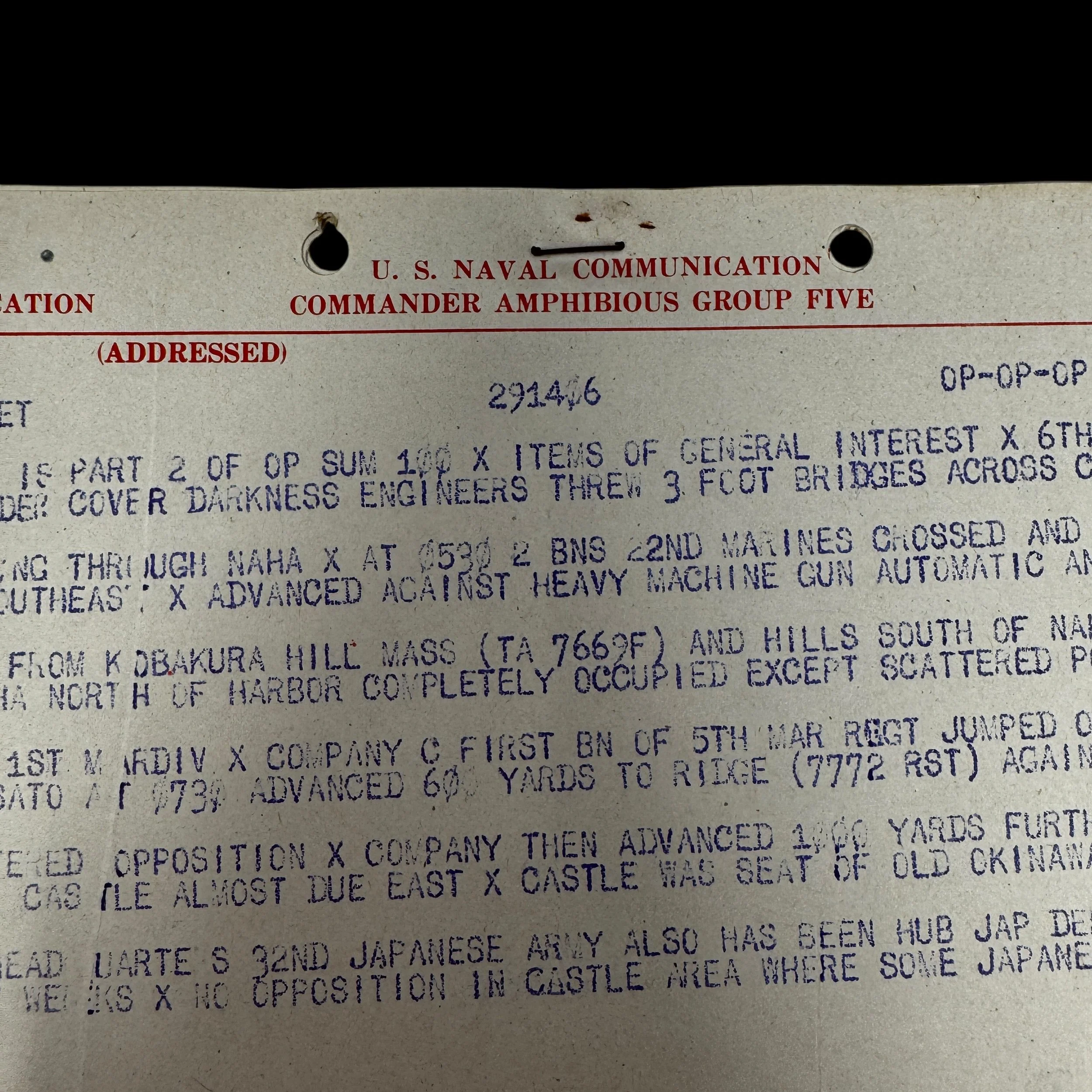
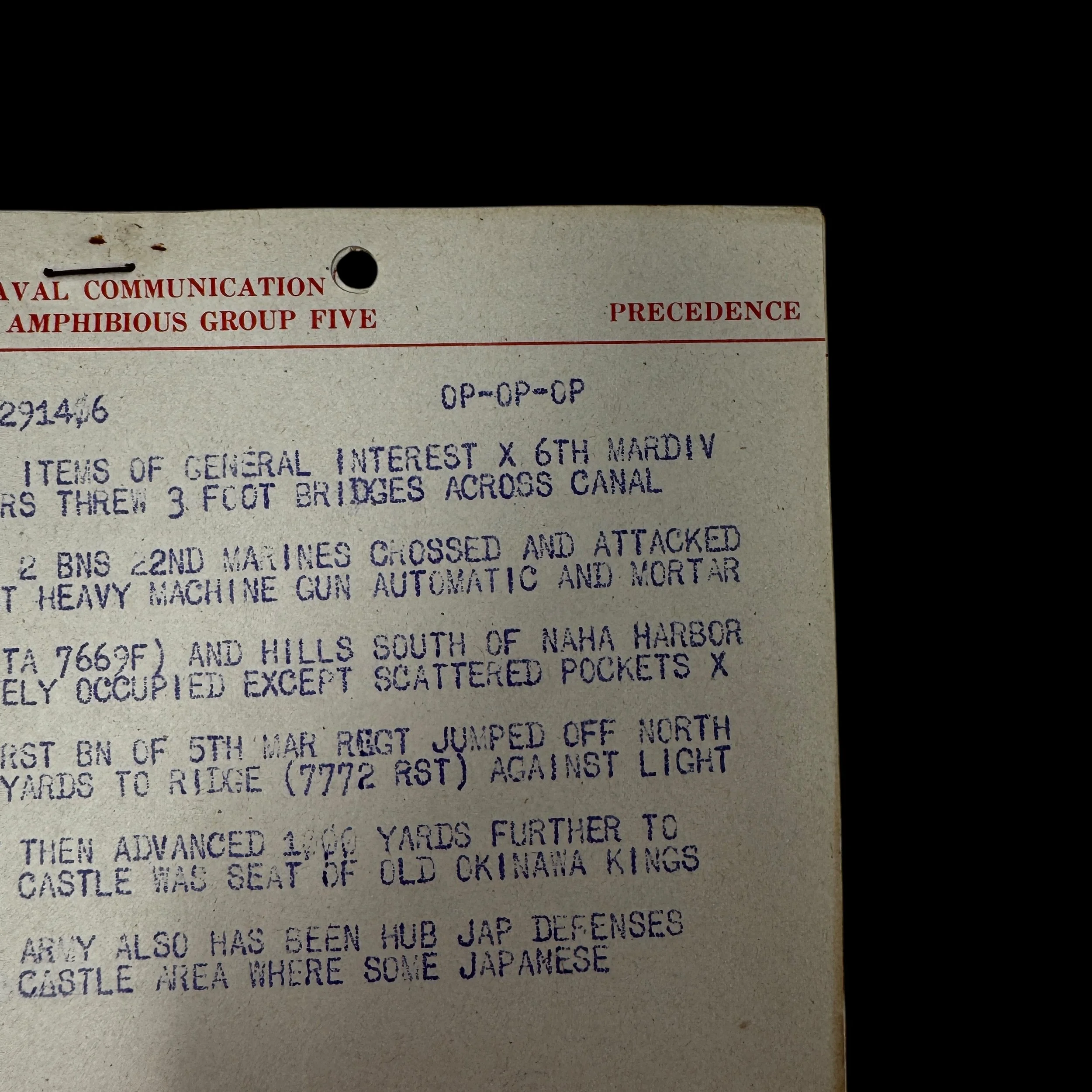
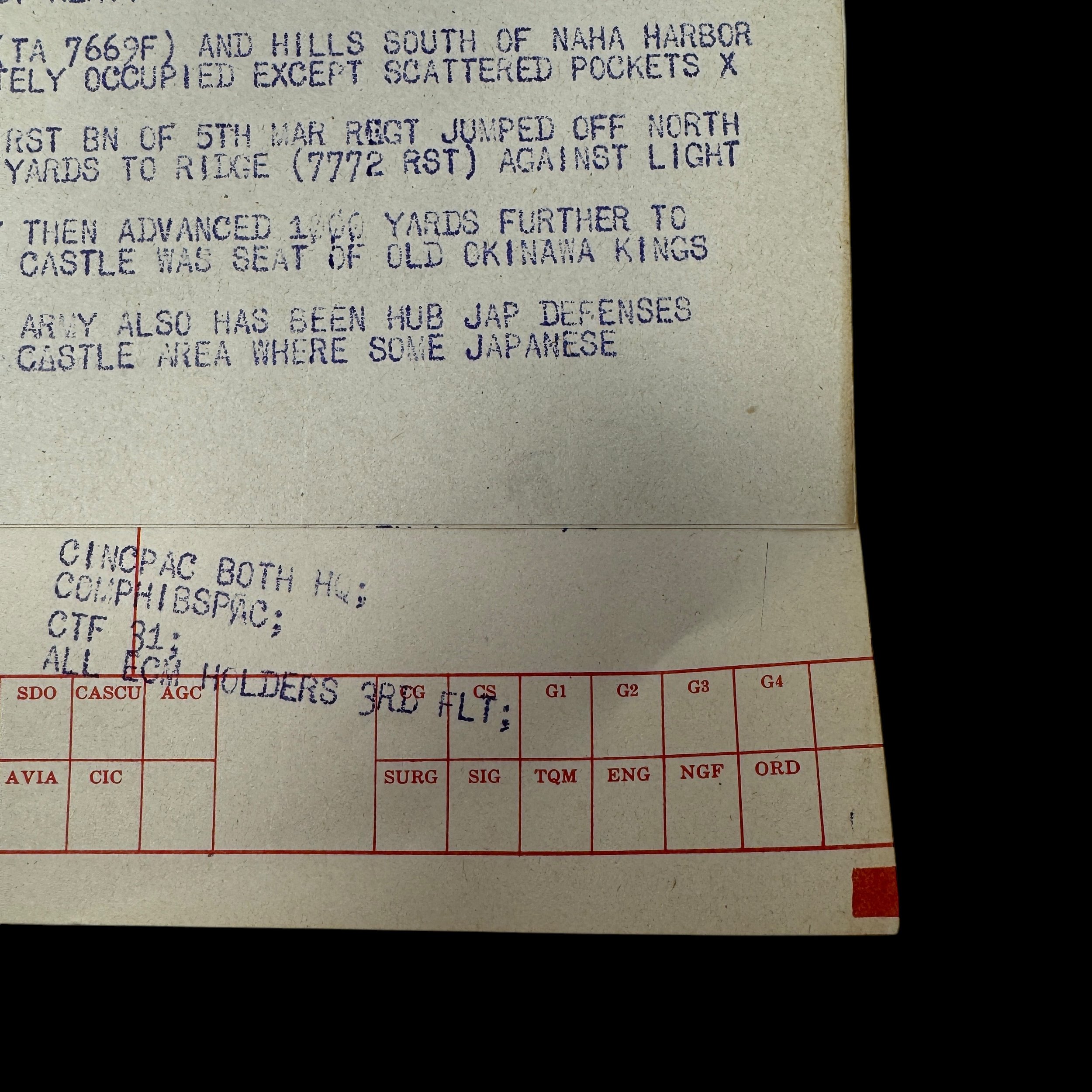
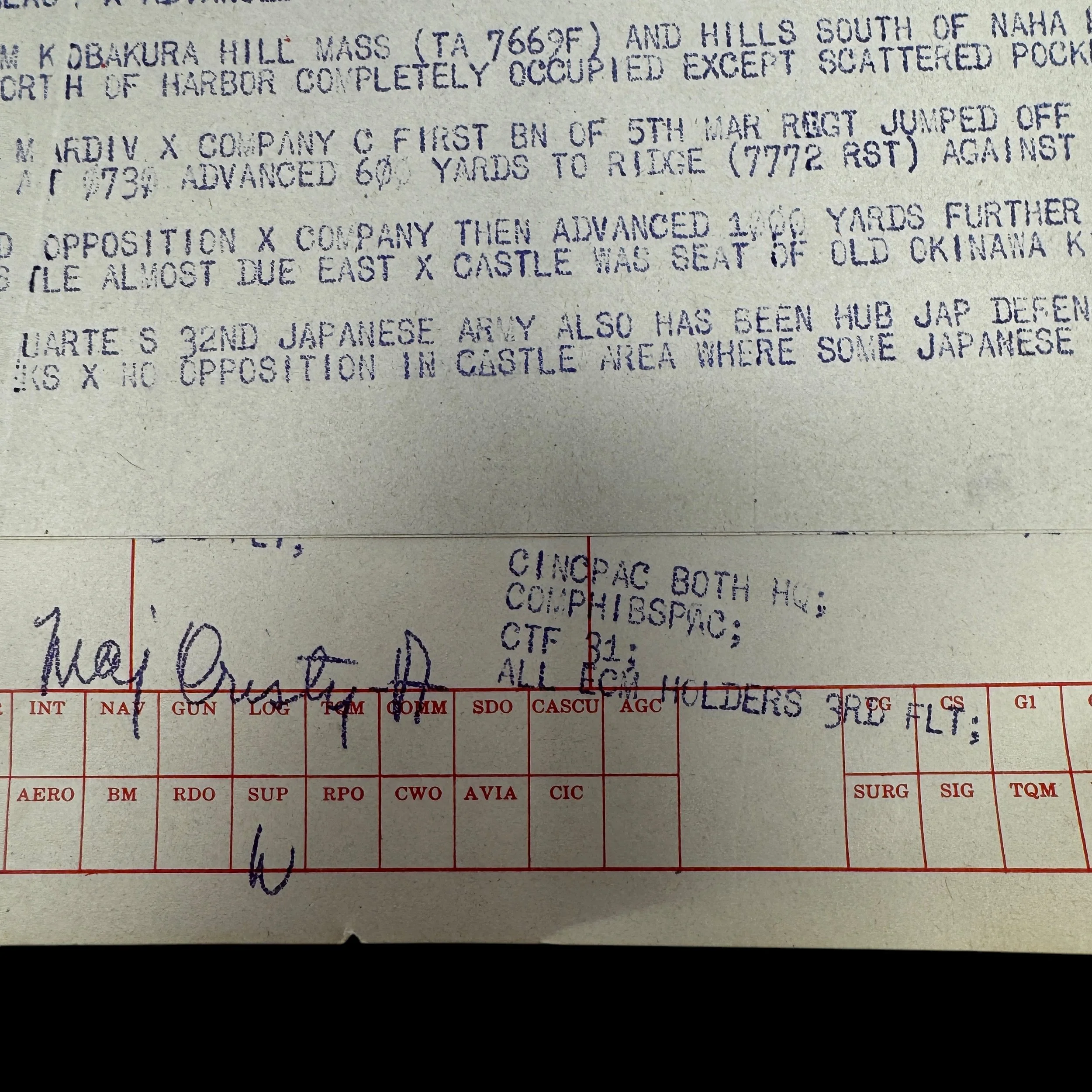
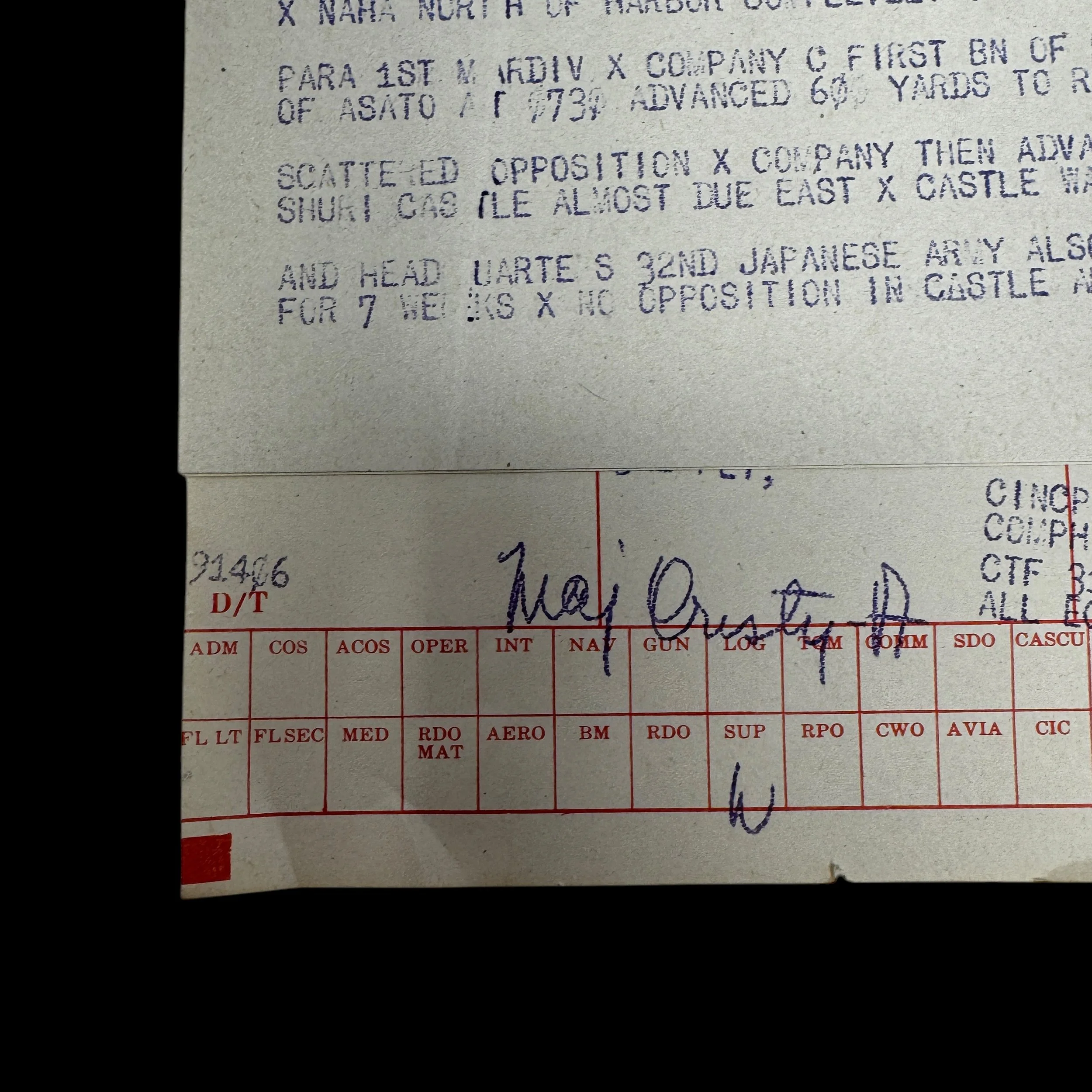
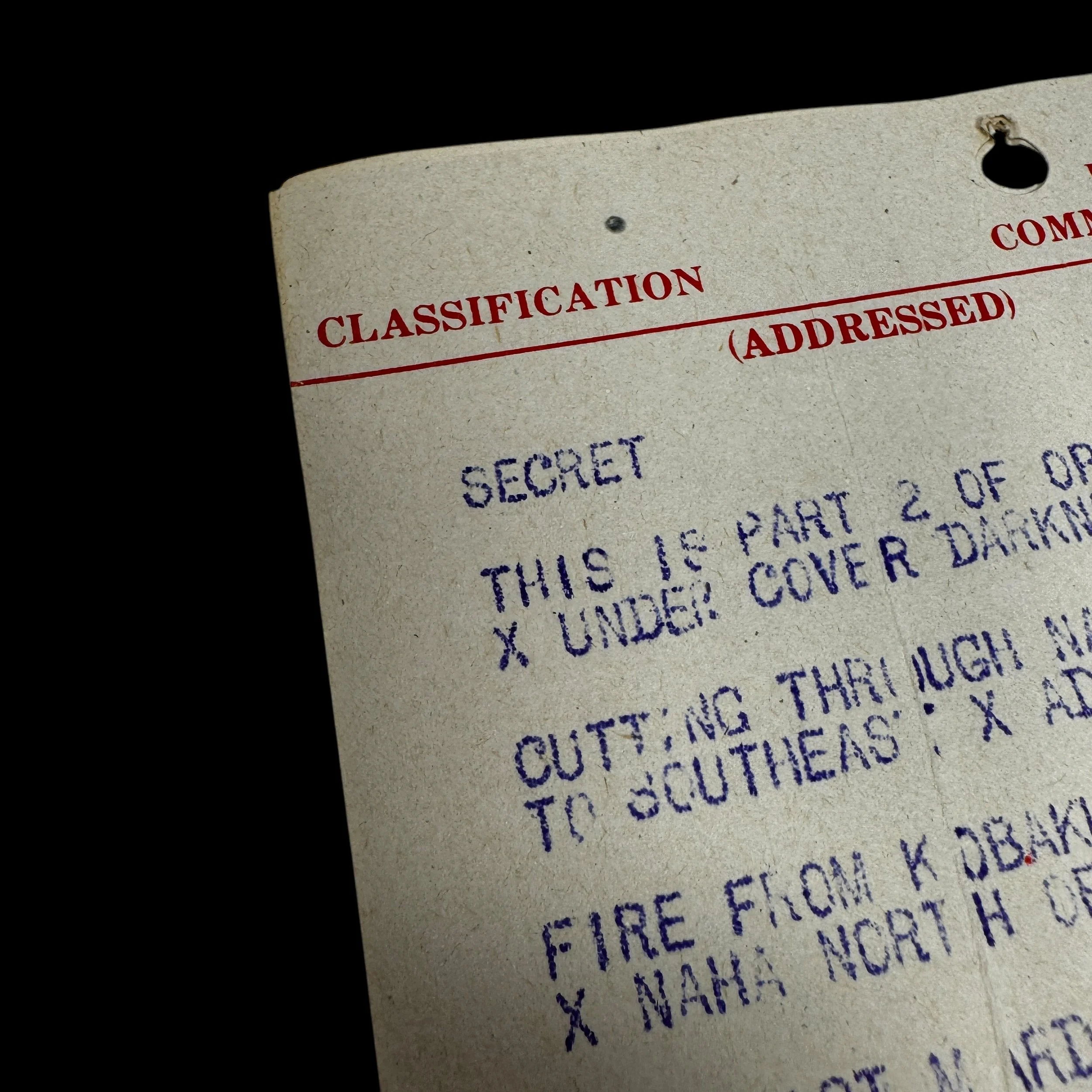
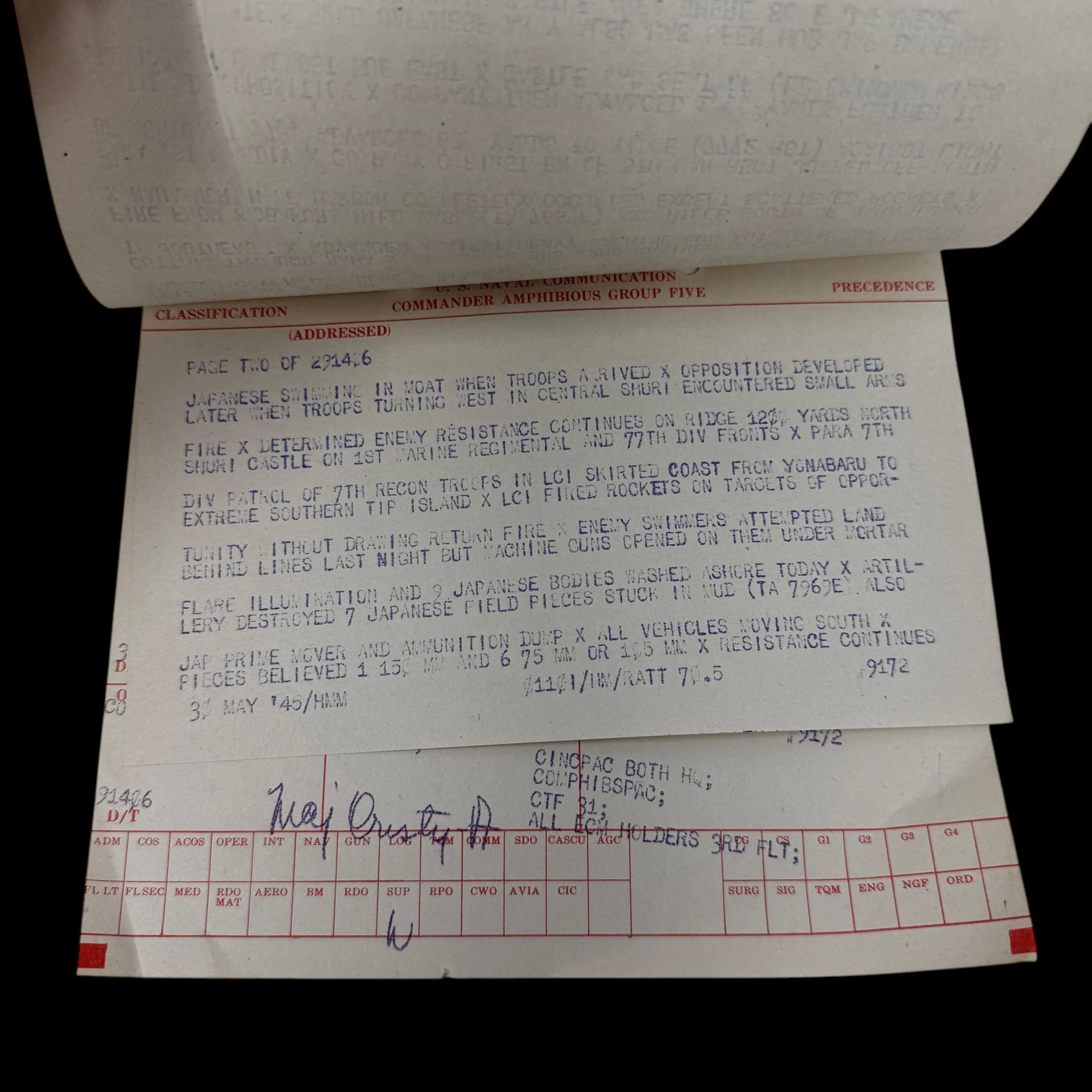

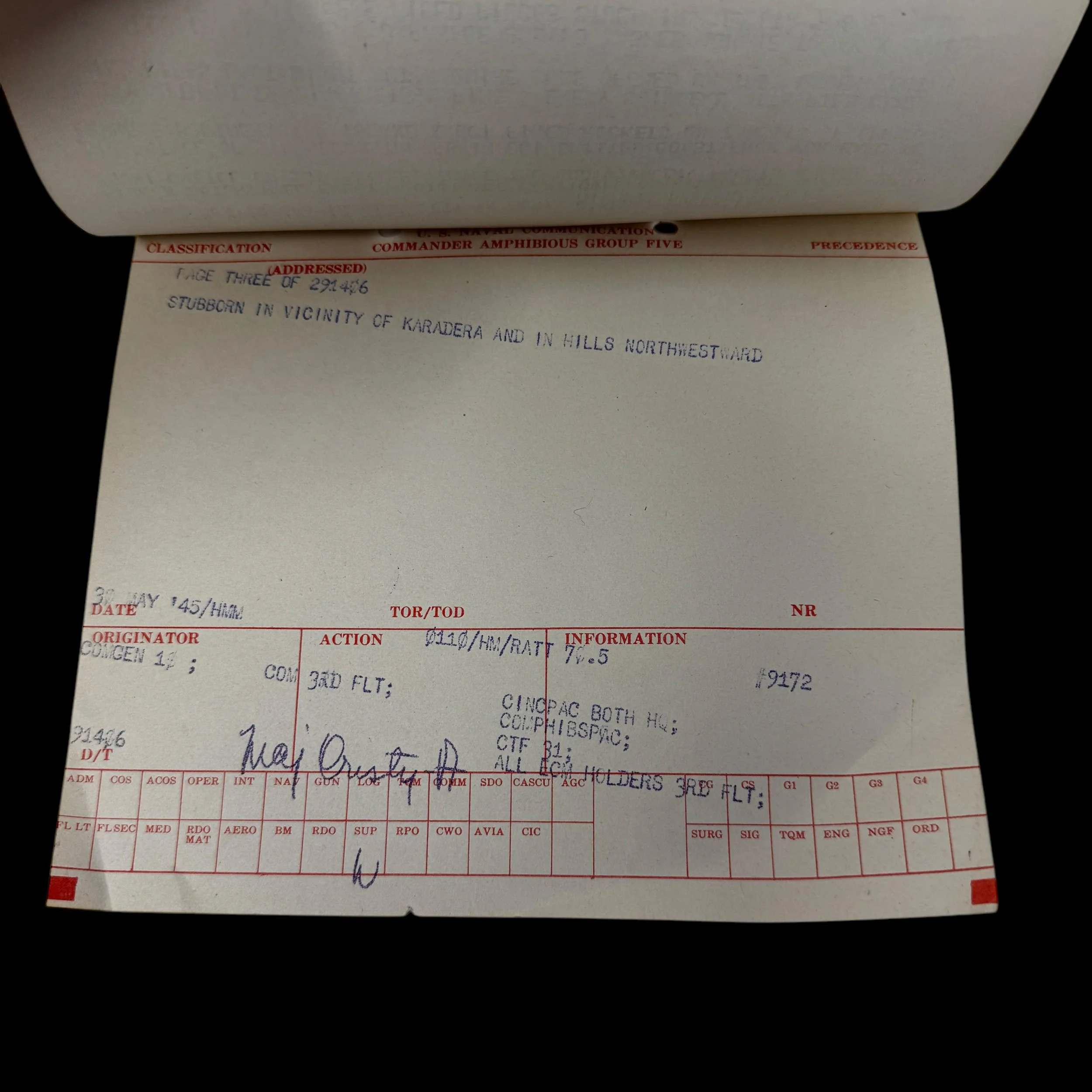


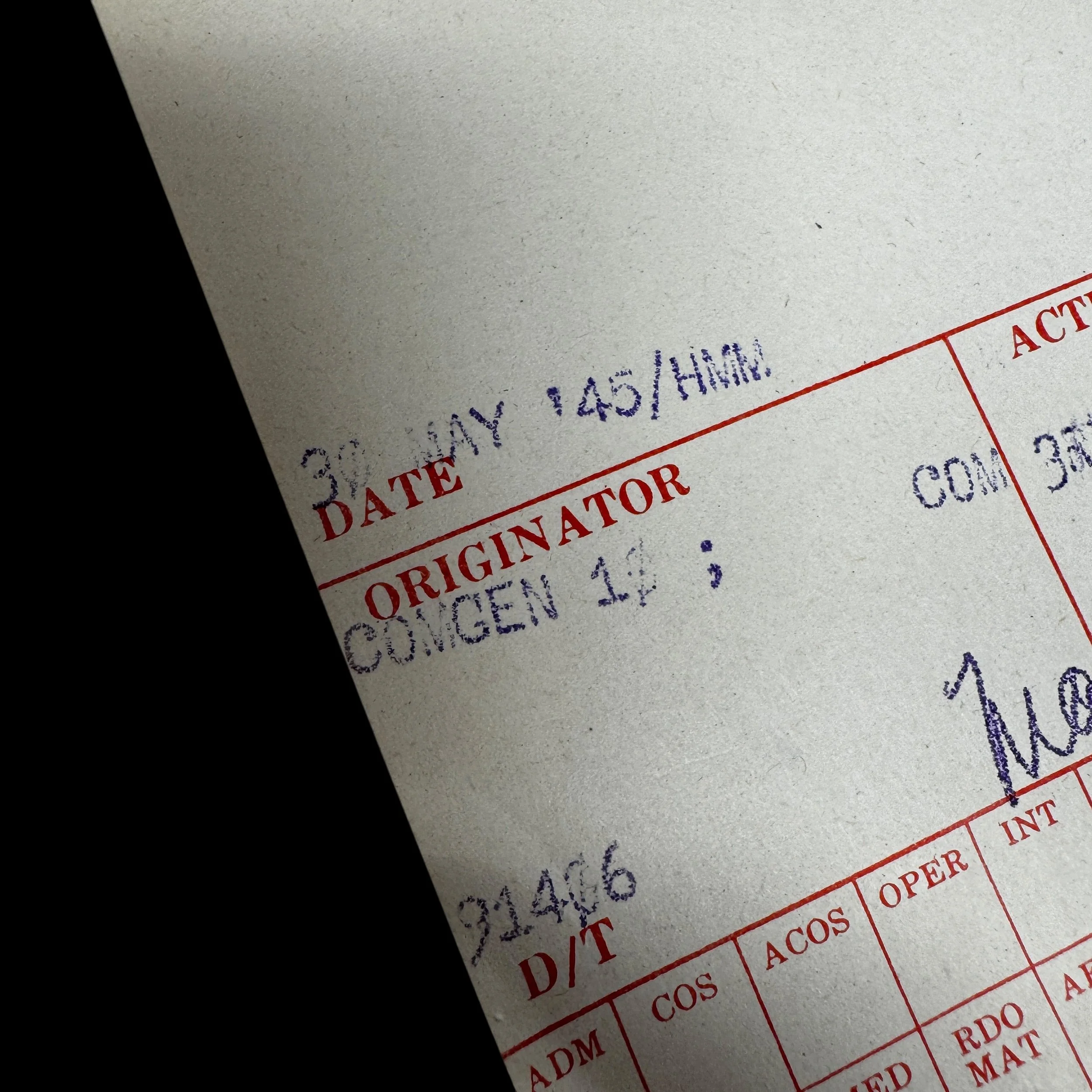

EXTREMELY RARE! WWII "SECRET" May 30th, 1945 Battle of Okinawa Rear "Commander of Amphibious Group Five" Admiral Jerauld Wright Combat Intelligence Report (3 Pages)
Comes with C.O.A.
Dated May 30th, 1945, this secret World War II Battle of Okinawa Pacific Theater combat report provides a detailed account of the nighttime advance of the U.S. Sixth Marine Division as they pushed deeper into enemy-held territory. Under the cover of darkness, Marine combat engineers constructed makeshift bridges across the channel cutting through Naha, enabling two battalions of the Second Marine Division to cross and launch an assault to the southeast. Their advance was met with intense resistance, as they faced heavy machine gun and automatic mortar fire from entrenched Japanese positions on Kobakura Hill.
The report also details the movements of the Fifth Marine Regiment near Asato, which continued its advance along the ridge, encountering scattered but determined Japanese opposition. Within 1,000 yards of the strategic Shuri Castle, Marines faced increasingly fierce enemy defenses, with fortified Japanese positions slowing the assault. The area remained heavily contested, as the castle served as a critical stronghold for the Japanese defensive line.
Japanese resistance persisted along the ridgeline of Shuri, with enemy artillery fire and troop movements observed in the vicinity. Vehicles were also spotted maneuvering in the area, suggesting ongoing reinforcement and resupply efforts by the Japanese forces. The combat report underscores the brutal nature of the fighting as U.S. forces pressed forward against well-entrenched defenders, highlighting the continued difficulty of securing Okinawa in the final phases of the battle.
3 PAGES
This extremely rare and museum-grade WWII artifact is a U.S. Naval Communication Battle of Okinawa combat intelligence report for Rear Admiral Jerauld Wright - Commander of Amphibious Group Five (a newly created unit of the Amphibious Forces, U.S. Pacific Fleet, commanded by Vice Admiral Richmond Kelly Turner).
Dated May 30th, 1945 this SECRET U.S.N. Ryukyu Islands (Operation Iceberg) intelligence report was produced on Rear Admiral Jerauld Wright's flagship USS Ancon (AGC-4). It provided intelligence to Rear Admiral Jerauld Wright during his command of the Task Group during the Invasion of the Ryukyu Islands - Battle of Okinawa - Operation Iceberg.
This intelligence report provided Rear Admiral Jerauld Wright - Commander of Amphibious Group Five with intelligence of the Pacific Theater operations such as U.S. Marine advances, POW captures, MIA reports, Japanese strongholds, divisional movements, retreats, resistance pockets, airstrikes reports, etc.
Rear Admiral Jerauld Wright was awarded a Bronze Star, with a combat "V" device, for his leadership as the commander of Task Group 51.2 during Operation Iceberg.
Amphibious Group Five:
In November 1944, Rear Admiral Wright took command of Amphibious Group Five, a newly created unit of the Amphibious Forces, U.S. Pacific Fleet, commanded by Vice Admiral Richmond Kelly Turner. Wright's group would be involved in the invasion of the Ryukyu Islands (Operation Iceberg), the island of Okinawa being the key objective. Once taken, U.S. forces would use Okinawa as a staging area for the eventual invasion of Japan, and a base for the B-29 Superfortress bombers of the U.S. Seventh Air Force to attack the Japanese home islands.[ Amphibious Group Five would transport the 2nd Marine Division, Major General Thomas E. Watson, USMC, commanding, with Wright flying his flag from USS Ancon (AGC-4).
For Operation Iceberg, Wright's force was designated Demonstration Group Charlie (Task Group 51.2), whose mission was to serve as a decoy force working in conjunction with the Southern Attack Force (Task Force 55) commanded by Rear Admiral John L. Hall while the Western Islands Group (Task Group 51.1) under Rear Admiral Ingolf N. Kiland and the 77th Infantry Division secured Kerama Retto and other offshore islands before landing at Ie Shima. Task Group 51.2 would subsequently serve as a floating reserve for the U.S. Tenth Army (Task Force 56), commanded by Lieutenant General Simon B. Buckner, USA, before returning to Saipan.
Wright was ordered to Pearl Harbor to begin planning the invasion of the Japanese home islands, which would begin with Operation Olympic, the invasion of the southern island of Kyūshū. Wright's Amphibious Group Five would be part of the 5th Amphibious Force, commanded by Vice Admiral Harry W. Hill, which would land the V Amphibious Corps (VAC) on the west coast in the Kaminokawa – Kushikino area. Amphibious Group Five would consist of four old battleships, ten cruisers, fourteen destroyers, and seventy-four support craft. However, Operation Olympic and the follow-up invasion of Honshū (Operation Coronet) were cancelled following the dropping of the atomic bombs on Hiroshima and Nagasaki. Rear Admiral Jerauld Wright was awarded a Bronze Star, with a combat "V" device, for his leadership as the commander of Task Group 51.2 during Operation Iceberg.